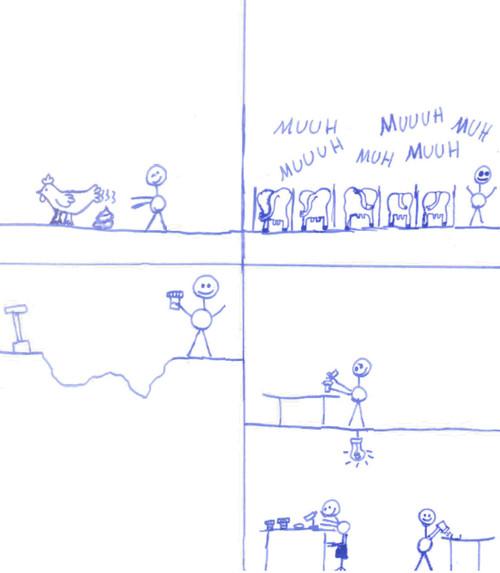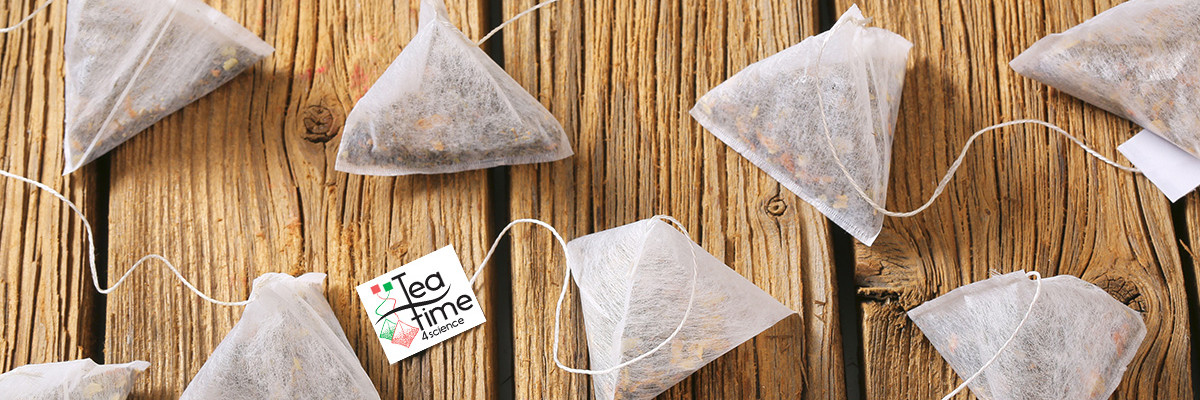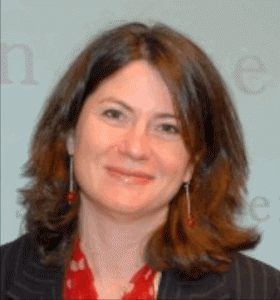Life below Water
Conserve and sustainably use the oceans, seas and marine resources for sustainable development
Oceans are vital for us; they regulate the global ecosystem, influence the climate and provide food and income for many millions of people. Furthermore, they absorb up to 30 per cent of the anthropogenic carbon dioxide, diminishing the impact of climate change. However, they are tremendously affected by human activities. For about 11 per cent of the world's population, fishing is of high importance as it represents the primary source of food and income, especially in coastal areas and small island states. Overfishing, together with ocean acidification, nutrient and plastic pollution all pose a significant threat not only to people relying on fishing for a living but also to marine life and environment.
This goal’s objective of protecting the world’s oceans and the people depending on them can be achieved through increased international cooperations. Better regulations practices for pollution, overfishing as well as protection of marine habitats should be implemented. Furthermore, individuals can also help by favouring products from sustainable fisheries, avoiding plastic packaging as well as taking public transport and reducing energy consumption, which further contributes to rising sea levels.
Anne Daebeler
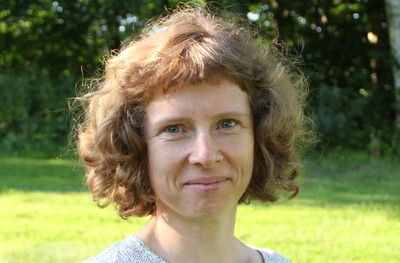
1. In welchem Bereich der Wissenschaft arbeiten Sie?
Ich bin eine mikrobielle Ökologin. Das heißt ich erforsche Mikroorganismen in verschiedensten Ökosystemen wie Boden, Seen und auch heißen Quellen. Dabei interessiert mich besonders, wie diese kleinen Wesen, die nur aus einer Zelle bestehen, unter den sich ständig ändernden natürlichen Bedingungen leben können und wie sie mit einander und der Umwelt in Reaktion treten.
2. Was fasziniert Sie am meisten am Thema Boden?
Aus der Perspektive eines Bakteriums ist der Boden ein ungeheuer komplexes Universum aus miteinander verbundenen und isolierten Lebensräumen, die alle ihre ganz eigenen Nährbedingungen haben – so verschieden wie die Planeten Erde, Sonne und Mars. Das führt zu einem faszinierenden Reichtum an Mikroorganismen, den wir gerade erst begonnen haben zu verstehen.
3. Wie sind Sie WissenschaftlerIn geworden?
Als Kind habe ich viele wundervolle Stunden in der Natur, auf Bäumen, an Flüssen und Seen und dem Meer verbracht. Seitdem liegt mir eine gesunde Umwelt am Herzen und ich halte es für unsere Aufgabe sie zu schützen. Mit dem Entdecken von Zusammenhängen zwischen Mikroorganismen und lebenserhaltenden Stoffkreisläufen leiste ich dazu einen Beitrag.
4. Was würden Sie Ihrem 14-jährigen Selbst über Ihre Berufswahl sagen?
Es ist zwar zu 50% ein Schreibtischjob den du dir aussuchen wirst, aber jeden Tag stellen sich dir neue, spannende Herausforderungen, die deine Kreativität und Neugier anregen werden.
5. Was sind die größten Herausforderungen an Ihrer Arbeit?
Wie in so vielen Wissenschaftsbereichen ist es extrem wichtig, einen offenen Blick zu behalten. Wenn ein Experiment einfach nicht klappt, kann es auch auf unentdeckte Zusammenhänge hinweisen. Außerdem empfinde ich den oft langen Weg zu einer gesicherten Anstellung im Bereich der Grundlagenforschung als herausfordernd und problematisch.
6. Haben Sie während Ihrer Karriere jemals Schwierigkeiten gehabt, die mit Ihrem Geschlecht oder Ihrer ethnischen Zugehörigkeit zusammenhingen?
Abgesehen von unausgesprochenen Haltungen wie „Eine Frau kann nicht so gut programmieren und mathematisch arbeiten.“ einiger (älterer) Kollegen, habe ich nie direkt Diskriminierung erfahren.
7. Hatten Sie bisher Wissenschaftlerinnen als Vorbilder in Ihrem Aufgabenbereich?
Eine Professorin für Pflanzenphysiologie hat mich während meines Studiums sehr beeindruckt. Sie war extrem gescheit, immer bereit ohne Wertung zu erklären und dabei sehr entspannt.
8. Was motiviert Sie in Ihrer Arbeit am meisten?
Ganz einfach die Befriedigung meiner Neugier. So vieles im Bereich der mikrobiellen Ökologie ist nur Hypothese oder gänzlich unverstanden. Das ist wahnsinnig spannend.
9. Was ist die größte Herausforderung beim Erreichen von SDG14 „Leben unter dem Wasser“ und wie kann Ihre Arbeit dabei helfen, diese zu lösen?
Ich fürchte, die größte Herausforderung ist derzeit noch eine politische: Alle Länder müssen die Wichtigkeit dieses Zieles anerkennen und dazu beitragen es zu erreichen. Meine Arbeit liefert wichtige Fakten über die Zusammenhänge zwischen Mikroorganismen und dem globalen Wandel. Diese werden dann von Ausschüssen wie dem IPCC aufbereitet und Politikern in Phasen der Entscheidungsfindung vorgelegt.
Sarah Cornell
1. What is your field of research?
I was trained as an environmental chemist, but I now prefer to call myself a sustainability scientist because I use knowledge and methods from various fields. My research focuses on human-caused global environmental changes that create new risks for our societies.
2. What fascinates you most about soil?
I am constantly amazed that soil is alive. Our everyday understanding of soil is that it is just “dirt”. Many schoolbooks describe soil as the stuff that weathered rocks become. The more I find out about the living parts of soil – the intricate ecosystems of bacteria and fungi – the more the very big picture of global environmental change makes sense. These microbial organisms play a vital role in driving Earth’s long life-history, but they barely ever get their place in the spotlight!
3. How did you become a scientist?
When I was young, I wanted to be a veterinarian. Unfortunately, I am really squeamish and even now I can’t really cope with the sight of blood, syringes, surgery or suffering (or even typing those words….) So I went through my last few years at school without really knowing what to do instead. I went to university to study chemistry because a chemistry professor I spoke with told me it would be fun, and perhaps useful.
Another way to answer this question is like this: I started asking questions about how the world works when I was a child. I went to school, university, and then graduate school, and kept on finding new and better questions… For me, that is really how a person becomes a scientist. The minute you are satisfied just with the answer somebody gives you – that is when you have lost your science instincts
4. What would you tell your 14 year old self about your career choices?
It is 30 years since I went to university. In my whole adult career, I feel that I have only made two real career choices. The first was near the start, when I chose to study environmental chemistry for my PhD, rather than to get a job in the chemical industry. The second was just a few years ago, when I chose to move to a different country where interdisciplinary sustainability science is being supported by government funding agencies. The rest of my career has either been going with the flow or taking jobs when there has been no alternative. Does that count as “choice”?
So my advice would be that whatever you are doing – in the workplace and anywhere else – do it whole-heartedly. Careers are shaped by the little everyday decisions as least as much as the big career choices. Your activities are building up skills and networks that might be important at some point.
And I would also tell my 14 year old self that if one career-path idea closes itself off (if, for example, the smell of pet hospitals makes you feel sick before you even see a sick pet), that is not a reason to feel hopeless. Career paths appear as you take career steps, so just say yes to the opportunities that come your way. If it looks like a smooth pathway before you start, then it probably won’t be a very interesting one!
5. What are the biggest challenges of your work?
There’s a line about scientists being people who know more and more about less and less, until eventually they know absolutely everything about nothing at all.
It’s a jokey comment, but there is a real challenge behind it. If our scientific knowledge is saying something important about the world we live in, then we also have to think about (1) how we join our knowledge to everyone else’s, and (2) how we might translate our knowledge into real-world action. A big challenge is figuring out (or negotiating) how to do those two things responsibly.
A very practical example of the challenge is that there is currently too much emphasis on producing publications and not enough on actually reading them!
6. Have you faced any difficulty throughout your career that is related to your gender or ethnicity?
Yes. Like many women working in science, I’ve experienced situations where men and women are treated differently in terms of being put forward for career-building opportunities, and face different expectations in the workplace. I have been fortunate not to have met many big difficulties, but many small differences in opportunity can really add up over time.
I had a short career break when my son was born, and I worked part-time for several years. I was fortunate to have a very supportive boss then, because at the time, working parents’ rights were not as good as they are now. In fact, we didn’t even talk in terms of “working parents”, because mothers often didn’t go back to work, and fathers often didn’t take time off work to do parenting.
I’ve not experienced any ethnicity-related difficulty. English is my native language, so I have a big communication advantage in many international science and policy contexts.
7. Did you have any women scientist role models in your field of work?
There were not many in my immediate field of environmental chemistry. Men definitely outnumber women a lot there! In the wider field of sustainability science, the gender ratio is more balanced in the workplace. But it is still quite normal to see “manels” – all-male panels at conferences and other important meetings.
Some women scientists outside my field of work have inspired me hugely and been generous with their encouragement – not just for me, but for all women in science. I met the astronaut Sally Ride when I was doing my PhD. The marine scientist Sylvia Earle is a hero of mine, and so is Isabelle Stengers, the philosopher.
So I have actively sought women scientists as mentors, and I think women are (slowly) getting better at networking and being more visible. That is really important when it comes to supporting each other when we experience all the small difficulties I mentioned earlier. The transparency and mutual support stop the many little obstacles from being a huge push off the career ladder.
8. What motivates you most in your work?
I get a buzz from working with first-year students! They come with so much enthusiasm to learn, and usually bring a lot of really inspiring life experience even at this early stage of their career. And they ask fresh new questions that always make me see something new in my understanding of the world.
I am also motivated by joining up pieces of knowledge. Some people dig deeper and deeper into a specific issue. Others seek to gather more and more knowledge. I like to figure out how concepts connect, and hopefully make better sense when multiple perspectives are combined.
9. What is the biggest challenge in reaching SDG14 “Life below Water” and how does your work help to solve it?
SDG 14 aims to “Conserve and sustainably use the oceans, seas and marine resources for sustainable development” – and I think the biggest challenge is right there in the first words. Conserving and using are usually exact opposites. (You can’t have your cake and eat it…), so the SDG is based on the assumption that we can somehow balance these opposing aims in a sustainable society of 2030.
The second biggest challenge (!) is that we have not sustainably used the oceans in the past, so we face a huge uphill task in conserving life under water. We have to reverse past damages – pollution, over-extraction, and all kinds of disturbance – not just save the species that we think of as “resources”.
And finally, the next biggest challenge is that we have so little knowledge about the oceans, compared to life above the land surface. Sustainably using something when we don’t really understand how it works is very different from sustainably using something whose behavior and functions we can predict well.
10. Draw your research!
Oh gosh. My first idea was just a really tangled scribble! But here goes…
Robert Körner
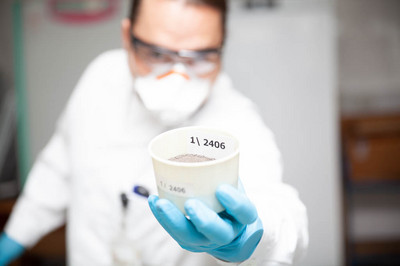
1. In welchem Bereich der Wissenschaft arbeiten Sie?
Ich bin in einem Labor für Boden- und Düngemitteluntersuchung tätig.
2. Was fasziniert Sie am meisten am Thema Boden?
Alleine die Farbvielfalt in der Boden natürlich vorkommt ist beeindruckend.
Die Vielfalt an Lebewesen und Nährstoffen im Boden sind zwar nicht immer auf den ersten Blick so sichtbar wie die Färbung, für die Natur jedoch genauso wichtig wie für die menschliche Nutzung.
Wir müssen mit der Natur und den Ressourcen verantwortungsbewusst und behutsam umgehen, um diese für nachfolgende Generationen zu erhalten.
3. Wie sind Sie WissenschaftlerIn geworden?
Bin eher durch Zufall auf den Lehrberuf des Chemielabortechnikers gekommen – würde es aber genauso noch einmal tun …
4. Was würden Sie Ihrem 14-jährigen Selbst über Ihre Berufswahl sagen?
Höre nie auf zu lernen …
5. Was sind die größten Herausforderungen an Ihrer Arbeit?
Alle an mich gestellten Aufgaben zeitgerecht und qualitativ hochwertig zu erledigen.
6. Haben Sie während Ihrer Karriere jemals Schwierigkeiten gehabt, die mit Ihrem Geschlecht oder Ihrer ethnischen Zugehörigkeit zusammenhingen?
Nein, darüber bin ich froh.
7. Hatten Sie bisher Wissenschaftlerinnen als Vorbilder in Ihrem Aufgabenbereich?
Vorbilder nicht direkt – ich ziehe aber vor der Wissenschaft meinen Hut. Ohne den Forscherdrang und die oftmals gestellte Frage nach dem „Warum?“ wäre die Menschheit nicht dort, wo sie jetzt ist.
Selbstkritisch muss sich die Wissenschaft aber fragen, warum so viele Dinge einfach nicht in den Griff zu bekommen sind ...
8. Was motiviert Sie in Ihrer Arbeit am meisten?
Nach erledigter Arbeit den Erfolg zu sehen und auch noch nach vielen Jahren stolz auf diese Erfolge zurückblicken zu können.
9. Was ist die größte Herausforderung beim Erreichen von SDG14 „Leben unter Wasser“ und wie kann Ihre Arbeit dabei helfen, diese zu lösen?
Die optimale Nährstoffversorgung und Bearbeitung von Boden in der Landwirtschaft reduziert die Belastung der Natur an Land genauso wie die der Natur im Wasser.
Wenn wir weiter daran arbeiten, die Ausbringung von Nährstoffen in der Landwirtschaft zu optimieren, wird es uns gelingen die Belastung der Gewässer und Meere zu reduzieren und hoffentlich eines Tages vollständig zu verhindern.
10. Zeichnen Sie Ihre Forschung/ Ihren Forschungsbereich!
Zeichen überlasse ich lieber jenen, die es können. :P
